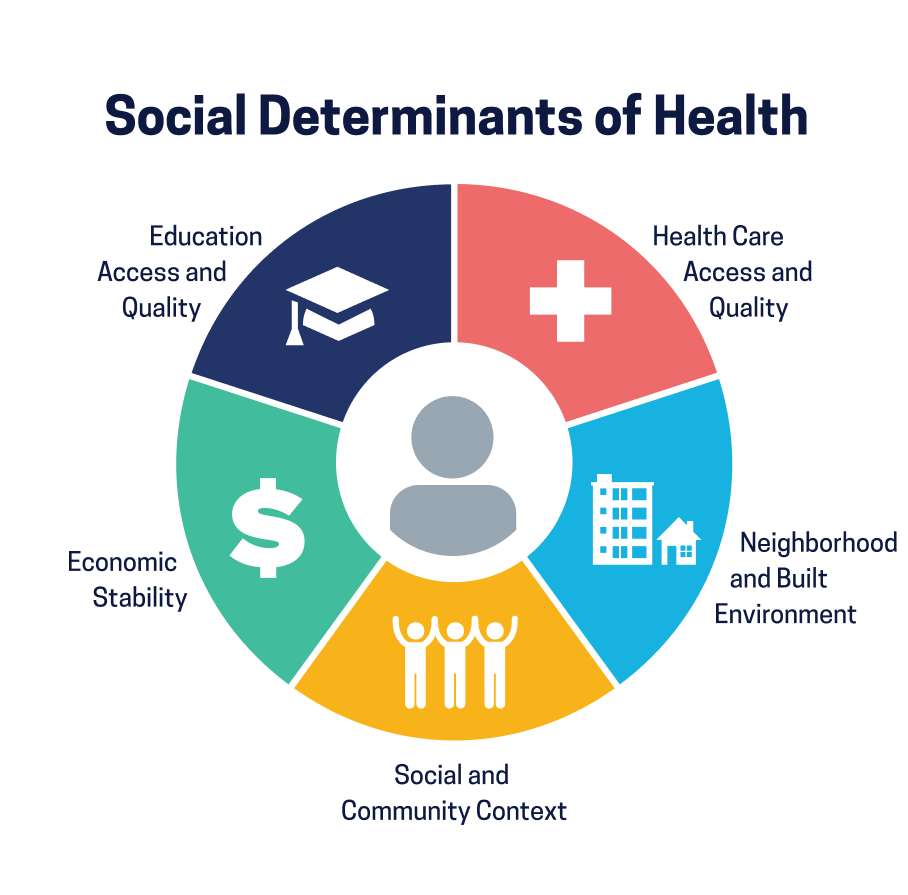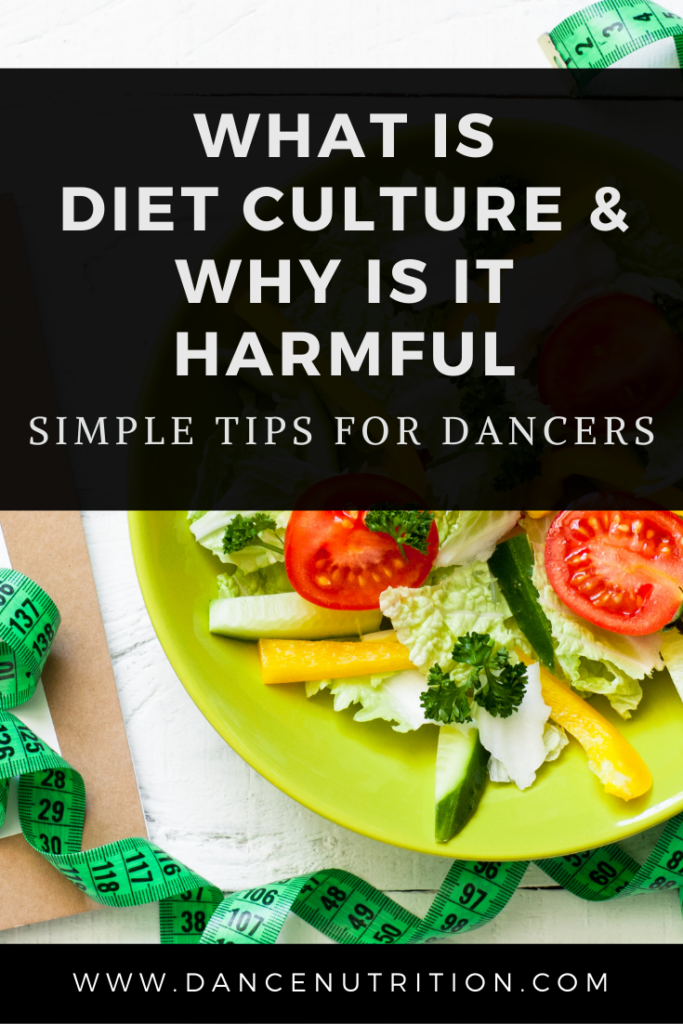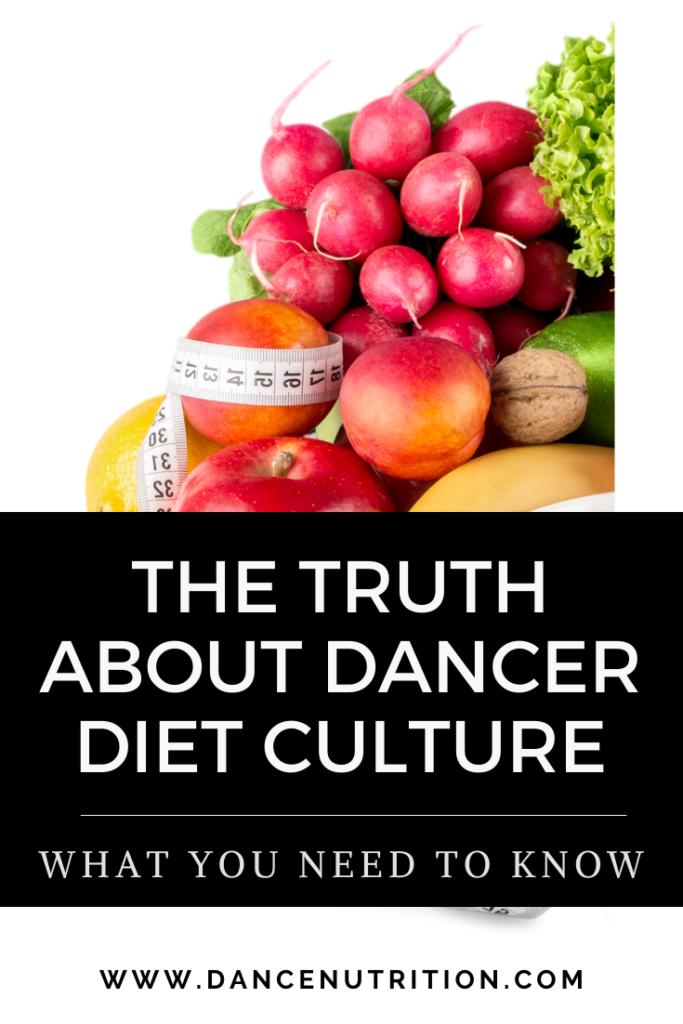Have you ever felt guilty for eating foods labeled “unhealthy” while praising yourself for sticking to “clean” foods? Do you struggle with endless rules about what you “should” or “shouldn’t” eat? Do certain foods feel safe while others spark anxiety? For many dancers, food— a basic necessity for energy and life— becomes a source of stress.
This is the influence of diet culture, and unfortunately, it has made its way into the dance world. In this article, we’ll unpack what diet culture is, why it’s harmful, and how dancers can begin to challenge it. We’ll also explore why one of the core values of The Healthy Dancer® framework is about dismantling dancer diet culture.
What Is Diet Culture?
Diet culture is a system of beliefs that places weight loss and body size at the center of health. It tells us that being thin is equal to being healthy, and it divides foods into “good” and “bad.” Under this mindset, dancers may feel morally “good” for eating vegetables or “bad” for eating dessert.
This black-and-white thinking not only fuels guilt and anxiety but also sets dancers up to distrust their own bodies and cravings.
Why Is Diet Culture Harmful?
Diet culture is harmful because it:
- Elevates a narrow body ideal. In dance, this is often tied to the “ideal ballet body.”
- Reinforces weight bias. Dancers in smaller bodies are often praised, while those in larger bodies may face criticism or fewer opportunities.
- Triggers shame and disordered eating. Restriction can spiral into cycles of bingeing, guilt, and even eating disorders.
While anyone can experience body dissatisfaction, those in smaller bodies don’t face the same level of bias as those in larger bodies. Here are some other common ways in which weight bias shows up in our world:
- Limited access to adequate healthcare for those in larger bodies
- Reduced physical activity due to societal weight stigma, regardless of body size
- Employment discrimination, with those in larger bodies less likely to be hired
The Truth About Diet, Weight, and Health
Diet culture convinces us that dieting is the path to health, but the evidence says otherwise:
- About 98% of diets fail to result in long-term weight loss, and for those “successful weight-loss maintainers,” eating behaviors parallel disordered eating.
- Genetics, environment, and access to resources (circumstances in which people are born, grow up, live, and work) have a far greater impact on body size than willpower or discipline.
- Weight cycling (losing and regaining weight repeatedly) is associated with increased risk of cardiovascular disease (more evidence), reduced bone density, and mental health struggles.

Instead of improving health, dieting often harms both the body and mind. Research shows that weight stigma itself— not just body weight— is linked to negative health outcomes. This chronic stress contributes to poor mental and physical health.
Diet Culture in Disguise: “Wellness”
Diet culture isn’t always obvious. Today, it often hides behind the language of “wellness.” Words like clean, pure, or detox can seem positive but still promote rigid rules and the idea that food choices reflect personal worth. This “modern guise of diet culture,” as Harrison calls it, still promotes perfection in our food choices and bodies, albeit with more “lifestyle” language.
Rather than choosing foods based on enjoyment, cultural tradition, or performance needs, dancers may end up making choices based only on whether they feel “on track” or “off track.”
Why Dancers Are Especially Vulnerable
Dance culture, with its emphasis on appearance and performance, can intensify diet culture’s messages. Roles may be assigned based on body type, and praise often goes to those who look a certain way.
This environment encourages dancers to push their bodies beyond healthy limits— restricting food, partaking in exhaustive exercise routines, and spending enormous energy on trying to fit a mold. Unfortunately, this pressure increases the risk of:
- Disordered eating
- Eating disorders
- Injury and burnout
- A strained relationship with food and body image
How Can Dancers Dismantle Diet Culture?
Diet culture is a $72-billion-dollar industry, so it won’t disappear overnight. But dancers can take steps to protect themselves and their communities. Here are five practical ways:
- Build a supportive community: Surround yourself with peers, teachers, and mentors who value body diversity and performance over appearance. The Healthy Dancer® Winter Intensive offers a space for dancers to work on this together.
- Seek professional support: Work with registered dietitians and mental health professionals trained in eating disorder care and sports nutrition.
- Curate your social media: Unfollow accounts that spark comparison or body dissatisfaction.
- Diversify your feed: Follow dancers of all body types, backgrounds, and abilities to broaden your view of what dance excellence looks like.
- Learn about weight bias: Education is a powerful tool. The more you understand how diet culture operates, the easier it becomes to step outside of its grip. You can also learn more about intuitive eating for dancers here.
Key Takeaways: Dancer Diet Culture
Diet culture teaches that thinness equals health. Weight, however, is not entirely within our control, and diets to micromanage our weight often fail in the long term. Dancers are particularly at risk due to the pressures of body ideals in the industry. Breaking free from diet culture allows dancers to pursue health in a way that supports longevity, artistry, and joy.





